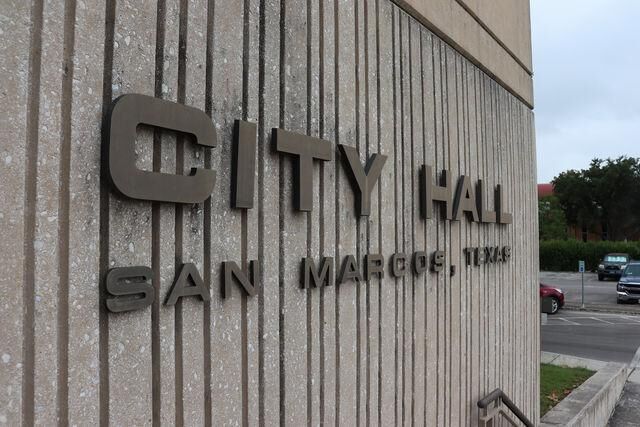In response to nationwide outrage stemming from accounts of police brutality, the City of San Marcos created a committee consisting of citizens and City Council members to review the San Marcos Police Department’s use-of-force policy.
In early August, City Council began the creation of the ad hoc committee, a committee formed to address a specific issue, composed of 15 San Marcos citizens who were proposed by the council members.
Community members who applied to join the committee were considered with the goal of accurately representing the population of San Marcos. City Council members sought to find applicants with diverse backgrounds taking into account factors such as ethnicity, gender, previous interactions with law enforcement and overall life experiences.
The University Star reached out to sources for the demographic make-up of the committee but did not immediately receive a response.
Committee member Nina Ramos says she believes for a community to function properly, powers need to be examined by members of the community. She says the ad hoc committee will conduct a comprehensive review of how the use-of-force policy is necessary and should be administered by community members along with the police department.
“Any amount of power that goes unchecked or unexamined is not good for any community. [San Marcos] is changing, and our expectations of [what] law enforcement looks like and what [police] interactions should look like is constantly evolving and needs to be under examination,” Ramos said.
Ramos says she has high hopes for a productive relationship between the committee and the police department, adding that new Police Chief Stan Standridge’s involvement in use-of-force review will be crucial in creating effective change.
“Chief Standridge will be involved to some degree, but it is my hope that he will be in attendance at all the meetings and be heavily involved in the process,” Ramos said. “However, we are yet to see what that [dynamic] is really going to look like.”
Following the police killing of George Floyd last May, the City Council asked SMPD to present its use-of-force policy. Members of the council were satisfied with the policies, one of which is a ban on officers using chokeholds on citizens unless deadly force — “any use of force that creates a substantial risk of causing death or serious bodily injury” — is authorized.
Standridge says while the ban of chokeholds is a step in the right direction, it is not enough.
“I will be instrumentally involved [with the committee], and ultimately it is my job to create [the] best practice policy for the police department,” Standridge said. “Banning chokeholds is just one small piece of comprehensive police reform that needs to occur that considers so many other issues within professional policing.”
Standridge says there are additional changes that need to be made to the use-of-force policy at SMPD. Specifically, he says he plans on amending it to include de-escalation, which includes techniques to avoid any given situation from worsening to a point of physical confrontation or violence.
“[The use-of-force policy] does not mention de-escalation,” Standridge said. “I’m going to change that; de-escalation is paramount to professional policing. Our use-of-force policy will be amended to ensure that de-escalation is ensured throughout.”
Councilmember Maxfield Baker believes use-of-force is a much broader topic than how it is often discussed, saying a police department’s definition of force can be unclear.
“Use-of-force extends to officers having harassing tones and reaching for their weapons,” Baker said. “There are little things that are often overlooked but are very aggressive; use-of-force accounts are just not reported enough. There is a discrepancy between accounts reported by citizens and accounts reported by officers.”
The committee began meeting in early November to review the SMPD use-of-force policies and will present its findings to the City Council in future meetings.
The most notable situation in San Marcos involving use-of-force occurred in 2009 when officer Paul Stephens reportedly used a baton on a woman who was not a physical threat nor resisting arrest. Stephens was indefinitely suspended following the incident for his dishonesty, part of which was him stating the woman was involved with a group that was fighting.
“The chain of command cannot depend on an officer who has a history of not telling the truth,” then-Police Chief Howard Williams wrote at the time.
While Stephens was dishonest about what occurred that night and whether he shared details of the incident with other parties (a result of a “sincere misunderstanding” rather than deliberate dishonesty, it was later concluded), an arbitrator concluded the claim Stephens violated the department’s use-of-force policy was not substantiated by a preponderance of credible evidence. Stephens was reinstated.
The use-of-force controversy had arisen after Stephens gained national attention and was suspended for two days following a 20-minute traffic stop involving a couple pulled over for speeding, The couple was headed to get its dog, which was choking on food, medical assistance before Stephens pulled the vehicle over.
Dashcam footage shows Stephens addressing the driver of the vehicle in a demeaning and harsh manner, referring to him as “stupid” and undermining his agitation for the pet who later died.
The University Star will continue to update this development as more information becomes available.
San Marcos committee to review police use-of-force policy
January 6, 2021
Donate to The University Star
Your donation will support the student journalists of Texas State University. Your contribution will allow us to purchase equipment and cover our annual website hosting costs.























